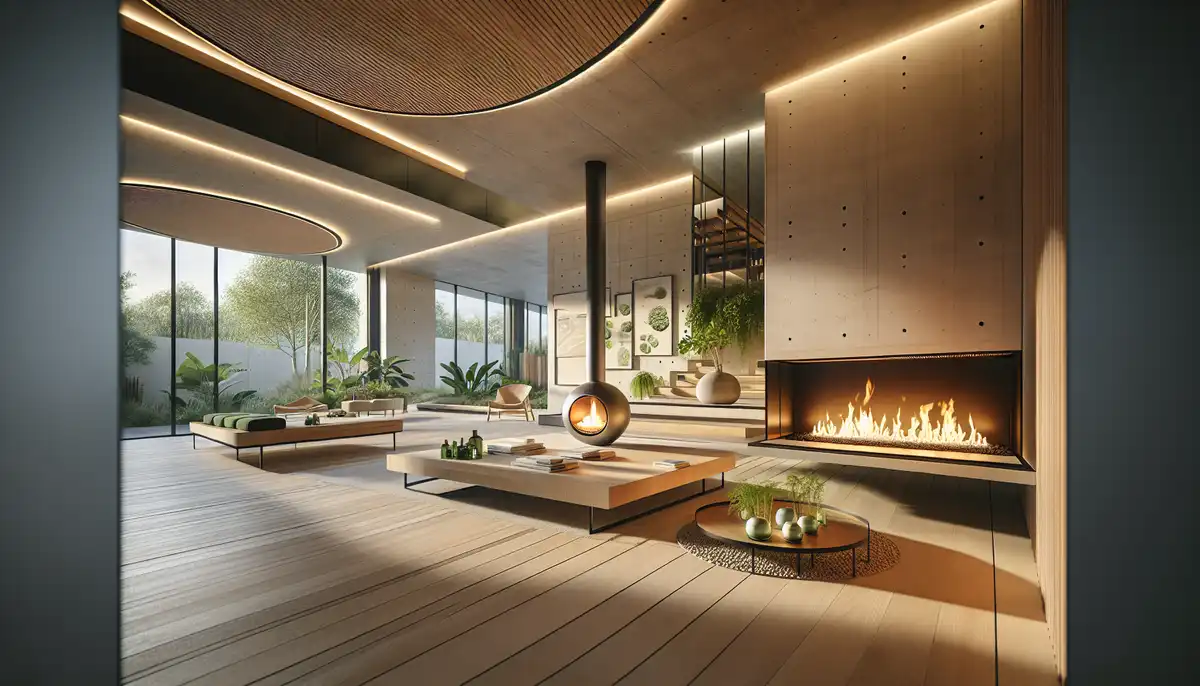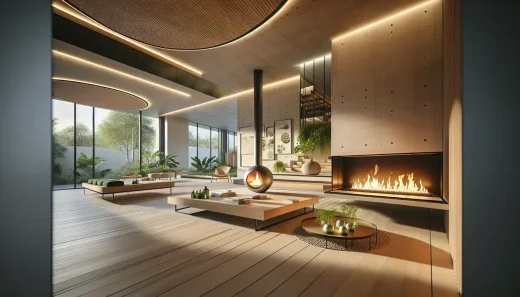Responsible rubbish removal, building restoration, Home renewal, Removing house refurb waste
Eco Friendly eating with bio ethanol fireplaces in modern architecture
14 January 2025
The movement for sustainable architecture has transformed how we design our spaces, combining aesthetics with environmental responsibility. Among the key components of this transformation are innovative heating solutions that prioritize eco-friendliness. For architects and designers, understanding these advancements is crucial to staying at the forefront of modern architectural design.
The drive for sustainability in architecture reflects a broader societal change towards environmentally responsible living. In recent years, eco-friendly heating solutions, such as the bio ethanol fireplace, have become essential elements in sustainable design strategies. With a focus on reducing carbon footprints and enhancing energy efficiency, architects increasingly incorporate renewable energy sources into their projects. As you explore new ways to innovate and improve your designs, considering these advancements can set your work apart.
The emergence of sustainable architecture
In contemporary architectural practices, sustainability is not just a trend but a necessity. This shift reflects a growing awareness of climate change and the need to reduce energy consumption in buildings. Architectural developments have demonstrated an increasing commitment to eco-friendly solutions, focusing on integrating renewable resources and reducing reliance on fossil fuels.
Incorporating sustainable elements into buildings involves more than just selecting materials; it encompasses the entire lifecycle of a project from construction to operation. The use of solar panels, green roofs, and geothermal systems are becoming more common as architects seek to minimize environmental impact while maximizing efficiency. These methods offer numerous benefits, including lower operational costs and enhanced building performance.
For architects and designers striving to achieve sustainable excellence, understanding these trends is crucial. Embracing sustainability not only meets regulatory demands but also enhances the marketability of your projects. Clients are increasingly looking for buildings that reflect their commitment to environmental stewardship, making sustainable design a compelling selling point.
Bio ethanol fireplaces
A key component of this green revolution is the “bio ethanol fireplace,” which offers a clean-burning alternative to traditional fireplaces. Unlike wood or gas fireplaces, bio ethanol models burn a renewable liquid fuel derived from plant biomass. This results in a fireplace that emits no smoke or soot, making it an ideal choice for environmentally conscious homeowners and businesses alike.
The environmental benefits of using bio ethanol as a fuel source are significant. By using bioethanol, you contribute to reducing greenhouse gas emissions and minimizing air pollution. Furthermore, these fireplaces do not require chimneys or flues, allowing for greater flexibility in architectural design and placement within spaces where traditional fireplaces might be impractical.
Bioethanol fireplaces are also celebrated for their aesthetic appeal and versatility. Available in various styles and sizes, they can be seamlessly integrated into any design scheme, from minimalist contemporary spaces to classic traditional interiors. Their ability to provide ambiance without compromising air quality makes them a popular choice among forward-thinking designers.
Aesthetic and functional integration
The integration of bioethanol fireplaces into modern architectural designs offers both aesthetic beauty and functional benefits. These fireplaces serve as focal points that enhance the visual appeal of any space while providing warmth and comfort without the need for conventional venting systems.
By allowing for flexible placement options, bioethanol fireplaces enable you to experiment with innovative design configurations that were previously challenging with traditional heating solutions. This versatility can lead to unique spatial layouts and enhance the overall user experience within a building.
Architects must consider several factors when integrating these fireplaces into their projects. Attention to detail regarding installation processes and safety standards ensures that the end product is both visually striking and safe for occupants. Electric-fireplace.co.uk offers valuable resources for understanding these considerations better.
Examples of bio ethanol fireplaces in architecture
Several innovative projects have successfully incorporated bioethanol fireplaces as part of their design strategy. These examples highlight how such integrations can enhance both aesthetics and functionality in diverse settings.
One notable project features a luxurious penthouse suite where a sleek bioethanol fireplace serves as a central piece in the open-plan living area, demonstrating the appliance’s potential to elevate high-end residential spaces. Similarly, commercial establishments such as boutique hotels have adopted these fireplaces to create inviting atmospheres while maintaining eco-friendly operations.
These examples illustrate the transformative power of integrating sustainable heating solutions into architectural projects. By adopting such technologies, architects can significantly improve energy efficiency while crafting visually appealing environments that resonate with modern sensibilities.
Practical considerations for architects
For architects considering bioethanol fireplaces in their designs, several practical considerations should be kept in mind. Firstly, understanding the specific installation requirements is essential for ensuring seamless integration without compromising safety or functionality.
Maintenance is another critical factor; regular cleaning and refueling ensure optimal performance over time. Fortunately, bioethanol fireplaces require minimal upkeep compared to traditional options due to their clean-burning nature.
Safety remains paramount; appropriate measures should be implemented during installation to prevent accidents or hazards associated with open flames. By adhering to industry standards and best practices, you can confidently incorporate these eco-friendly heating solutions into your projects.
Comments on the guide to Eco-friendly heating with bio ethanol fireplaces in modern architecture article welcome.
Glasgow Architecture
Major Strathclyde Building Designs – selection:
Historic Glasgow : best Glasgow architecture of the past
Comments / photos for the Eco-friendly heating with bio ethanol fireplaces in modern architecture page welcome.

